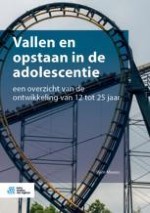go back to reference Pasman, J., Verweij, K., Gerring, Z., Stringer, S., Sanchez-Roige, S., Treur, J., Abdellaoui, A., Nivard, M., Baselmans, B., Ong, J-S., Ip, H., Van der Zee, M., Bartels, M., Day, F., Fontanillas, P., Elson, S., the 23andMe Research Team, de Wit, H., Davis, L., MacKillop, J., The Substance Use Disorders Working Group of the Psychiatric Genomics Consortium, International Cannabis Consortium, Derringer, J., Branje, S., Hartman, C., Heath, A., Van Lier, P., Madden, P., Mägi, R., Meeus, W., Montgomery, G., Oldehinkel, A., Pausova, Z., Ramos-Quiroge, J., Paus, T., Ribases, M., Kaprio, J., Boks, M., Bell, J., Spector, T., Gelernter, J., Boomsma, D., Martin, N., MacGregor, S., Perry, J., Palmer, A., Posthuma, D., Munafò, M., Gillespie, N., Derks, E., & Vink, J. (2018). GWAS of lifetime cannabis use identifies new risk loci, genetic overlap with psychiatric traits, and a causal influence of schizophrenia. Nature Neuroscience, 21, 1161–1170.
Pasman, J., Verweij, K., Gerring, Z., Stringer, S., Sanchez-Roige, S., Treur, J., Abdellaoui, A., Nivard, M., Baselmans, B., Ong, J-S., Ip, H., Van der Zee, M., Bartels, M., Day, F., Fontanillas, P., Elson, S., the 23andMe Research Team, de Wit, H., Davis, L., MacKillop, J., The Substance Use Disorders Working Group of the Psychiatric Genomics Consortium, International Cannabis Consortium, Derringer, J., Branje, S., Hartman, C., Heath, A., Van Lier, P., Madden, P., Mägi, R., Meeus, W., Montgomery, G., Oldehinkel, A., Pausova, Z., Ramos-Quiroge, J., Paus, T., Ribases, M., Kaprio, J., Boks, M., Bell, J., Spector, T., Gelernter, J., Boomsma, D., Martin, N., MacGregor, S., Perry, J., Palmer, A., Posthuma, D., Munafò, M., Gillespie, N., Derks, E., & Vink, J. (2018). GWAS of lifetime cannabis use identifies new risk loci, genetic overlap with psychiatric traits, and a causal influence of schizophrenia.
Nature Neuroscience, 21, 1161–1170.
